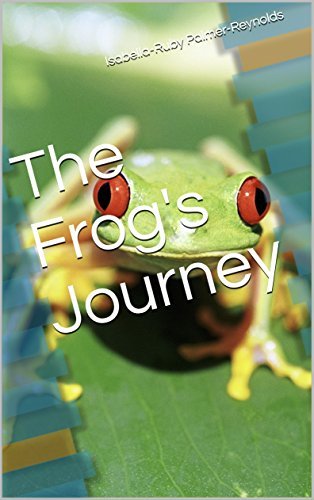A Frog’s Journey: Understanding Down Syndrome Through the Lens of Nature
Imagine a world where differences are not just tolerated, but celebrated. A world where the vibrant tapestry of life, from the smallest insect to the tallest tree, unfolds in all its glorious variations. This is the perspective we’ll adopt as we explore the complexities of Down Syndrome, not through clinical jargon, but through the insightful metaphor of a frog’s journey through the natural world. By observing the interconnectedness and diversity of nature, we can gain a deeper understanding and foster greater empathy for individuals with Down Syndrome.
The Lily Pad of Learning: Introducing Down Syndrome
Down Syndrome, also known as Trisomy 21, is a genetic condition caused by the presence of an extra copy of chromosome 21. This extra genetic material impacts physical development and can lead to varying degrees of intellectual disability. The journey of understanding Down Syndrome begins with education. Just as a frog must learn the lay of the lily pads, we must familiarize ourselves with the foundational concepts.
- What is a Chromosome? Think of chromosomes as blueprints containing instructions for building and operating the body.
- The Extra Chromosome: In individuals with Down Syndrome, there’s an extra copy of chromosome 21, leading to developmental differences.
- Varied Manifestations: The impact of Down Syndrome varies. Some individuals may require more support than others.
- A Spectrum, Not a Definition: Down Syndrome is a spectrum, meaning the range of abilities and challenges varies from person to person.
Navigating the Pond: Physical and Developmental Characteristics
The frog’s journey through the pond mirrors the experiences of individuals with Down Syndrome. Just as the frog must navigate currents and obstacles, individuals with Down Syndrome may face specific physical and developmental challenges.
- Physical Traits: Common physical features may include:
- Flattened facial profile
- Upward slanting eyes
- A single deep crease across the palm of the hand
- Smaller ears and mouth
- Shorter stature
- Developmental Considerations:
- Cognitive Development: May experience learning differences and require individualized educational approaches.
- Speech and Language: Often experience delays in speech and language development.
- Motor Skills: May take longer to develop motor skills like walking and grasping.
- Health Considerations: Increased susceptibility to certain health conditions, such as heart defects and respiratory issues.
The Ecosystem of Support: Fostering Inclusion and Opportunity
Just as a healthy pond relies on a thriving ecosystem, individuals with Down Syndrome thrive in supportive environments that encourage inclusion and opportunity. This involves:
- Early Intervention Programs: These programs provide therapies and support services to help children with Down Syndrome reach their full potential.
- Inclusive Education: Integrating children with Down Syndrome into mainstream classrooms, fostering social interaction and learning from their peers.
- Healthcare and Therapy: Access to specialized medical care, including speech therapy, occupational therapy, and physical therapy.
- Community Integration: Participation in social activities, employment opportunities, and community events.
- Advocacy and Awareness: Raising awareness and advocating for the rights and needs of individuals with Down Syndrome.
The Chorus of Acceptance: Celebrating Diversity
The beauty of nature lies in its diversity. Every creature, every plant, plays a vital role in the ecosystem. Similarly, individuals with Down Syndrome enrich our communities with their unique perspectives, talents, and contributions. The frog learns to appreciate the differences in the pond. So too, we should embrace the differences that make us human.
- Empathy and Understanding: By fostering empathy, we can better understand the challenges and triumphs of individuals with Down Syndrome.
- Celebrating Strengths: Focusing on the strengths and abilities of individuals with Down Syndrome rather than solely on their limitations.
- Promoting Independence: Supporting individuals with Down Syndrome in achieving their goals and living fulfilling lives.
- Building a More Inclusive World: Creating a society where everyone is valued and respected, regardless of their differences.
Conclusion: The Ripple Effect of Compassion
The frog’s journey through the pond teaches us that diversity is not a weakness but a strength. By approaching Down Syndrome with curiosity, empathy, and a commitment to inclusivity, we can create a world where individuals with Down Syndrome thrive. Just as a single ripple can spread across the pond, our actions of compassion and understanding can create a positive impact on the lives of those around us, fostering a more just and equitable society for all.
Frequently Asked Questions (FAQs)
- What causes Down Syndrome? Down Syndrome is caused by the presence of an extra copy of chromosome 21.
- What are some common characteristics of Down Syndrome? Common characteristics can include distinctive facial features, varying degrees of intellectual disability, and potential health challenges.
- How can I support someone with Down Syndrome? You can support individuals with Down Syndrome by being a friend, advocating for inclusion, educating yourself, and celebrating their unique abilities.
- Is Down Syndrome preventable? Down Syndrome is not currently preventable.
- What is the life expectancy for individuals with Down Syndrome? With advancements in healthcare and support, individuals with Down Syndrome are living longer and healthier lives, with a life expectancy that has increased significantly over the past several decades.



